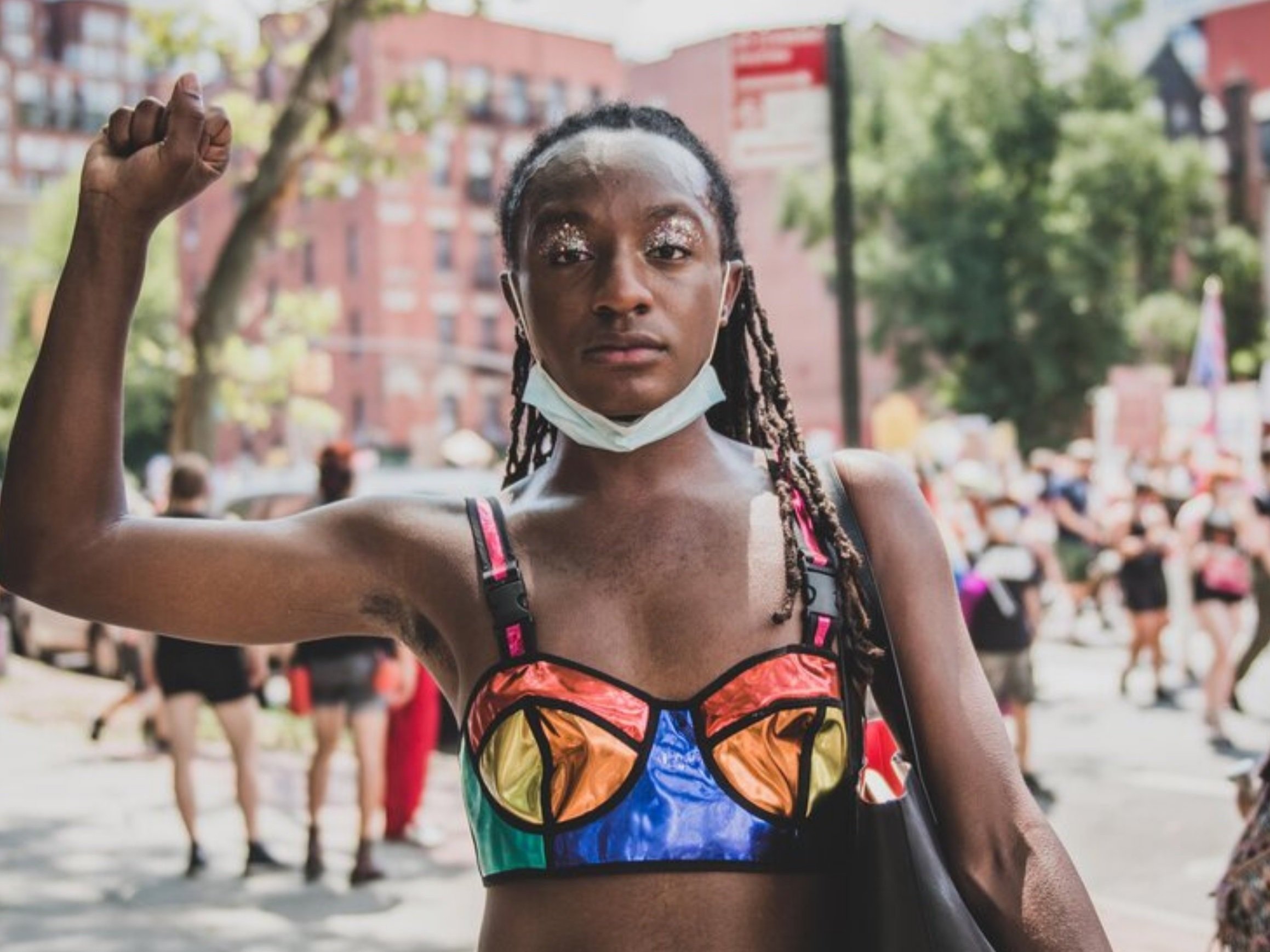Pride and Protest: What Should Pride Look Like?
Photos by Leandro Justen. Originally printed in AphroChic magazine Issue 7, Summer 2021.
Pride marks the anniversary of the Stonewall Uprising, multiple demonstrations as a result of police violence at the Stonewall Inn, a gay bar in Greenwich Village. In the early hours of June 28, 1969, Stonewall patrons and community members clashed with police after officers stormed the bar, arresting, violating, and beating people as part of their routine raids on queer establishments. The escalation turned into two days of rebellion and protest, and what is considered to be one of the greatest movements in queer liberation.
As a result we have Pride, a month of parades across the world that celebrate LGBTQIA2S+ history, identity, and progress. Today, Pride looks vastly different from the early demonstrations. Pride Parades are sponsored events, with police presence and celebrity guests. In America, Pride season has become a mainstream and commodified time, a revisionist history of what has been a difficult half century. It is a premature party during a very precarious moment.
Surprisingly (to myself at least), I have only been to one Pride Parade. While the Dykes on Bikes got me misty-eyed, I was disappointed by the corporations skipping by, offering stickers and merch in hopes of gaining my attention, trust, and ultimately my patronage. Many companies change their logo to rainbow for Pride month, and stores start stocking Pride gear. From ugly T-shirts, to Pride ads, to sponsoring parades, the June market is saturated by companies vying for approval and influence. When I first came out, this development was exciting. I used a rainbow logo as a measure of progression, representation, and safety. But this pink or rainbow washing starts June 1st and ends on the 30th. These corporations brush their actively discriminatory histories under the rainbow rug and continue to support homophobic causes and politicians the rest of the year. The LGBTQ+ community is only another identity to exploit profit off of.
Rainbow capitalism is just one example of the way Pride is devalued. In the US, pride celebrates markers of “progress” including marriage equality, the repeal of Don’t Ask, Don’t Tell, and other legislation. These moments should be recognized, however they do less to mark queer liberation and point more to an assimilation into heteronormative establishments and their respectability. This progress is only relevant to a small portion of the queer community. Is it time to celebrate when the history of criminalization and the AIDS crisis is so recent? When 44 trans people were murdered in 2020 and 29+ already this year; where 20%-40% of homeless youth identify as LGBTQ+; where transwomen of color are subject to high levels of police violence; and where queer people are more likely to be assaulted or take their own lives? We have more work to do.
One thing that the Stonewall Uprising and current Pride parades have in common is the presence of cops. During that fateful night in Greenwich, the police fought against the community, but now they patrol the parade and even march along. Law enforcement has a long history of abusing the queer community. The violence queer people faced at the hands of the cops during bar raids like Stonewall throughout the 20th century was horrific.
When considered with the constant brutality towards Black people, the overpolicing of trans people in the street, and the higher arrest rates for queer people, there is no room in a queer community space for potential violence. Cops at Pride don’t make it any safer. They’re a reminder of a vicious past and a presence that is discomforting at best, dangerous at worst.
All this criticism to say, in short, that Pride shouldn’t be a policed progress party for the privileged. They called Stonewall a riot, a rebellion, an uprising. And that’s what we need more of.
In 1997, Cathy Cohen, political scientist and activist, published Punks, Bulldaggers, and Welfare Queens: The Radical Potential of Queer Politics?. In this essay, which received a follow-up reflection in 2019 (The Radical Potential of Queer? Twenty Years Later), Cohen proposes, “I am interested in examining the concept of ‘queer’ in order to think about how we might construct a new political identity that is truly liberating, transformative, and inclusive of all those who stand on the outside of the dominant constructed norm of state-sanctioned white middle-and upper-class heterosexuality.” In Cohen’s conception, the new “queers,” comprised of all marginalized groups (LGBTQ+, people of color, women, working class and disabled people, etc.) could strategically band together to uproot heteronormativity.
Cohen argues for an intersectional approach to queer liberation. And this is what I propose we need for Pride. Pride should be a continued rebellion against oppression. Pride should be accessible, a BLM rally, a Women’s march, a labor movement. The oppression faced for being Black or gay or poor comes from the same source. The violence that we march against in BLM demonstrations is the violence that victim- izes trans and disabled people. That power is supported by capitalism and corporations, homonationalist dogma, and police. These are the things we don’t need at Pride and what we should unite against.
This idea isn’t new. People have been rebelling against the commodification of Pride for ages now. Fortunately, there are some examples of what an intersectional, radical Pride looks like.
The Queer Liberation March, hosted by the Reclaim Pride Coalition in NYC is an alternative demonstration whose tag line is “No corps, no cops, no bs!”. Their mission is to remember Stonewall and the people of color that were so instrumental in the movement and keep them at the heart of their cause. In 2020, the March was canceled due to the pandemic. After the death of George Floyd, it was rescheduled and reframed as the Queer Liberation March for Black Lives and Against Police Brutality. Year round they do programming for BLM and abolition and are a platform for artists of color.
The Reclaim Pride Coalition is one of many organizations seeking progress and justice across intersectional identities. Demonstrations like these make a better, prouder Pride. With even NYC Pride decreasing police presence, the Prides they are a-changin’ for sure. 52 years after Stonewall, it’s time to return to Pride as a protest that liberates us all.







